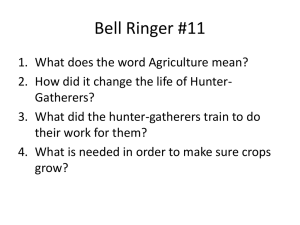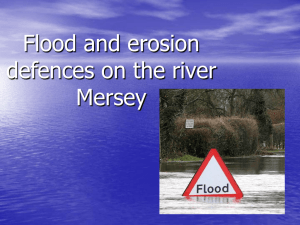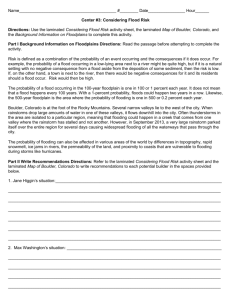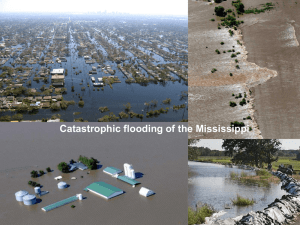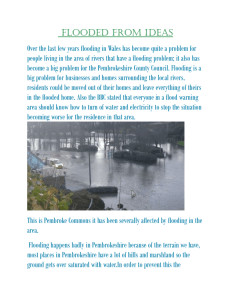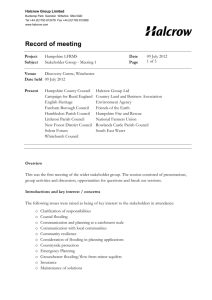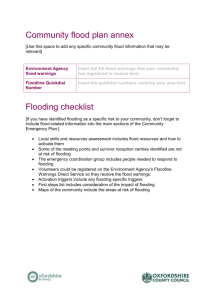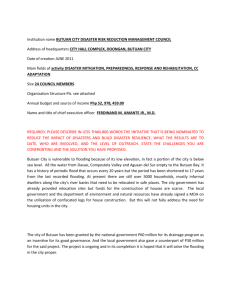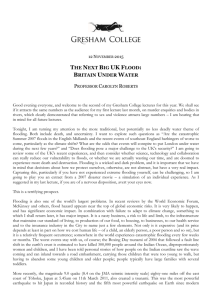Flood - The Department of Education and Training
advertisement
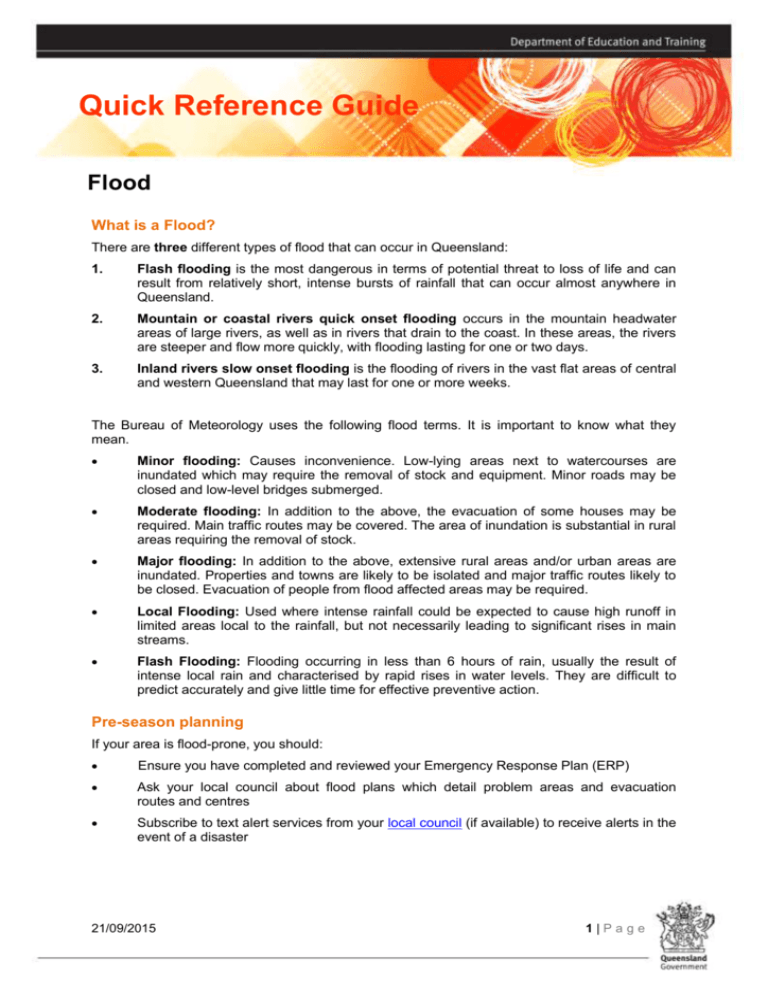
Quick Reference Guide Flood What is a Flood? There are three different types of flood that can occur in Queensland: 1. Flash flooding is the most dangerous in terms of potential threat to loss of life and can result from relatively short, intense bursts of rainfall that can occur almost anywhere in Queensland. 2. Mountain or coastal rivers quick onset flooding occurs in the mountain headwater areas of large rivers, as well as in rivers that drain to the coast. In these areas, the rivers are steeper and flow more quickly, with flooding lasting for one or two days. 3. Inland rivers slow onset flooding is the flooding of rivers in the vast flat areas of central and western Queensland that may last for one or more weeks. The Bureau of Meteorology uses the following flood terms. It is important to know what they mean. Minor flooding: Causes inconvenience. Low-lying areas next to watercourses are inundated which may require the removal of stock and equipment. Minor roads may be closed and low-level bridges submerged. Moderate flooding: In addition to the above, the evacuation of some houses may be required. Main traffic routes may be covered. The area of inundation is substantial in rural areas requiring the removal of stock. Major flooding: In addition to the above, extensive rural areas and/or urban areas are inundated. Properties and towns are likely to be isolated and major traffic routes likely to be closed. Evacuation of people from flood affected areas may be required. Local Flooding: Used where intense rainfall could be expected to cause high runoff in limited areas local to the rainfall, but not necessarily leading to significant rises in main streams. Flash Flooding: Flooding occurring in less than 6 hours of rain, usually the result of intense local rain and characterised by rapid rises in water levels. They are difficult to predict accurately and give little time for effective preventive action. Pre-season planning If your area is flood-prone, you should: Ensure you have completed and reviewed your Emergency Response Plan (ERP) Ask your local council about flood plans which detail problem areas and evacuation routes and centres Subscribe to text alert services from your local council (if available) to receive alerts in the event of a disaster 21/09/2015 1|Page Preparedness prior to the event Ensure key staff know where, how and when to turn off the main power, water and gas supply in case of emergency and evacuation Consider the CE Directive No.01/2015 for school closures Tune into Warnings information Listen to your local radio station Rainfall and river height http://www.bom.gov.au/qld/flood/ Visit your local council website for information on local emergencies Be aware of the Standard Emergency Warning Signal (SEWS). This is a wailing siren sound used at the beginning of serious warnings on radio and television Be aware of Emergency Alert Service voice messages to your landline and text messages to your mobile (Emergency Alert messages issued in Queensland are included on the Queensland Disaster Management Services website) gauge readings can be accessed at Immediate action Activate your Emergency Response Plan Tune into Warnings - stay tuned into additional warnings and updates Move vehicles, outdoor equipment, garbage, chemicals and poisons to higher locations Secure any items that may float away or move in flood waters e.g. gas bottles, garbage bins Store drinking water in clean sinks, plastic bottles and any other safe storage containers If you have livestock, move them to a safe area Consider the CE Directive No.01/2015 for school closures Contact school bus companies to confirm services Don’t wait to be told – Self evacuate to your predetermined evacuation destination if your School is in a flood prone area. Inform your Regional Director / emergency services if you do plan to self-evacuate Lock up your facilities Engage communications strategy Plan your evacuation route to avoid flood water and other possible hazards Call your Regional Director before you leave and once you arrive at your evacuation location 21/09/2015 2|Page Follow up actions Do not use matches or lighters, in case of leaking natural gas pipes or fuel tanks nearby. Remain calm and alert, and listen for information and instructions from emergency services or local officials Contact your Regional Director Refer media to the Regional Director Consider school closure CE Directive No.01/2015. Use communications strategy Check with local councils for boiled water alerts Confirm power is connected Check that sewage services are operational If damage to facilities or debris on site contact BAS immediately to respond to the cleanup and rectification works For support on any of the above, please contact your Regional Office Infrastructure Advisor Notify Education Queensland International if any international student is involved Recovery Seek support from School Guidance Officers and Employee Advisors as appropriate: http://education.qld.gov.au/health/contacts/contacts-ea.html Review of processes, debriefing, and memorials (if necessary) NB: School closures are posted on DET website http://deta.qld.gov.au/natural-disasters.html, Facebook and Twitter. Additional Information For further information contact the Emergency and Security Management Unit on (07) 3034 6012 DET Website http://deta.qld.gov.au/ Twitter www.twitter.com/QLDDETE Facebook http://www.facebook.com/pages/Queensland-Department-of-Education-Trainingand-Employment/136384799716300 21/09/2015 3|Page

